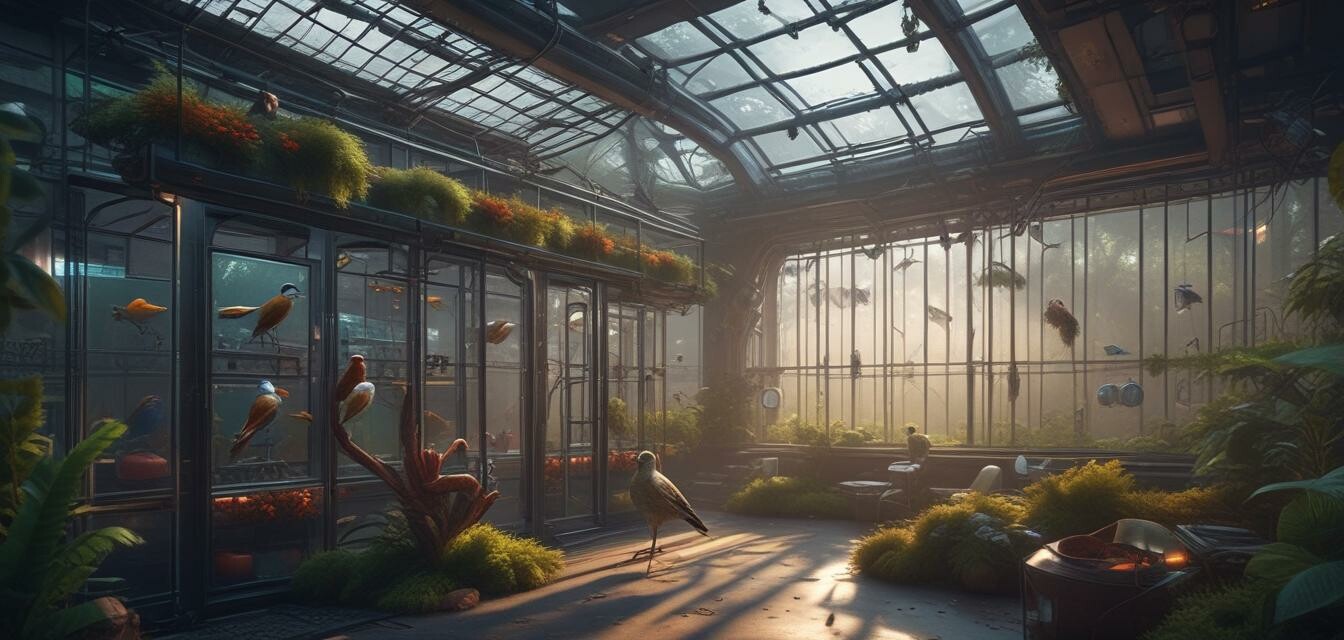
Trends in Aviary Designs for 2025
Key Takeaways
- Focus on spaciousness and comfort for birds.
- Integration of natural elements in design.
- Customizable features that cater to specific species.
- Sustainable materials are becoming a trend.
- Use of technology for monitoring bird health and behavior.
As we look forward to 2025, the trends in aviary designs are changing to better meet the needs of our feathered friends. Innovations are not just about aesthetics but also focused on enhancing comfort, safety, and well-being of various cage bird species. Let's dive deeper into some of the most exciting trends that are set to transform how we design aviaries next year.
Spaciousness and Comfort: A Priority
The modern aviary is designed to maximize space, ensuring that birds can move freely. Here are some considerations:
- Designs that allow for vertical movement.
- Open layouts to mimic a natural environment.
- Multiple perches at different heights.
Importance of Size
Providing an adequate space is crucial for the physical health of cage birds. A larger aviary can help reduce stress and promote natural behaviors.
Integration of Natural Elements
Integrating natural materials and elements into aviary designs is gaining traction. This not only enhances the aesthetic appeal but also provides enrichment for the birds.
| Natural Element | Benefits |
|---|---|
| Branches and Logs | Encourage climbing and exploration. |
| Natural Plants | Provide hiding spots and stimulation. |
| Water Features | Promote bathing and hydration. |
Customizable Features for Different Species
Not all birds are the same, and aviary designs are increasingly offering customizable features. This ensures that aviaries cater to the specific needs of different species.
- Species-specific perch heights.
- Varied feeding areas based on dietary needs.
- Specialized nesting areas for breeding birds.
Example Custom Features
| Species | Recommended Perch Height | Nesting Preferences |
|---|---|---|
| Parakeet | 2-3 feet | Cup nesting boxes |
| Cockatiel | 3-4 feet | Hollow logs |
| Canary | 1-2 feet | Nesting materials readily available |
Sustainable Materials: An Essential Trend
With a growing emphasis on sustainability, aviary designs are incorporating eco-friendly materials.
- Recycled wood and plastics.
- Non-toxic finishes and paints.
- Energy-efficient lighting systems.
Incorporating Technology
As technology becomes more prominent in our lives, aviary designs are integrating smart technology to monitor the environment and health of the birds.
- Monitoring systems for temperature and humidity.
- Cameras for behavior observation.
- Automated feeding systems based on dietary plans.
Benefits of Technology in Aviaries
The adoption of technology provides bird owners with peace of mind, allowing real-time monitoring of conditions within the aviary.
Conclusion
The trends in aviary designs for 2025 are pointing towards a more comfortable, engaging, and environmentally responsible approach to housing cage birds. These innovative designs cater to the well-being of our feathered companions, fostering a connection that goes beyond mere ownership.
Stay Updated
For ongoing updates about aviary designs, new products, and trends, explore our Cage Bird News and Trends category.
Pros
- Enhances the overall health of birds.
- Creates a more stimulating environment.
- Allows for species-specific adaptations.
Cons
- Initial investment may be higher.
- Requires more maintenance for natural elements.